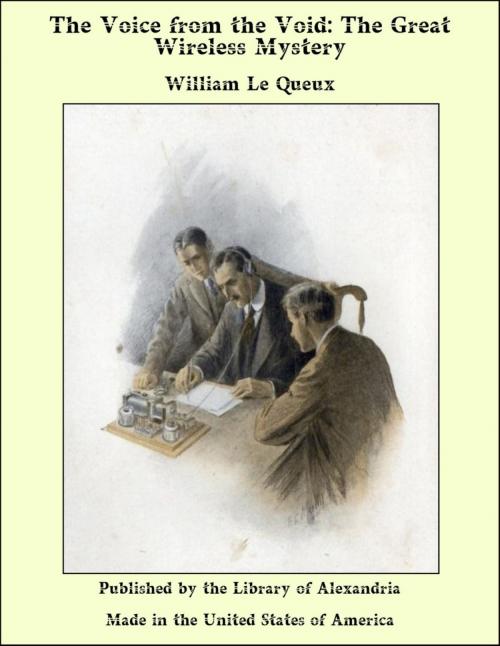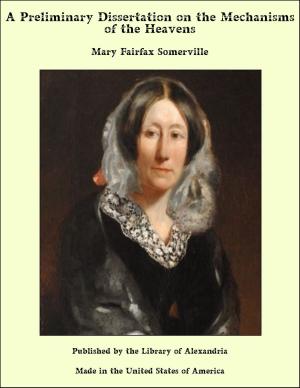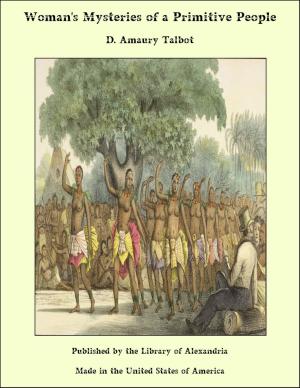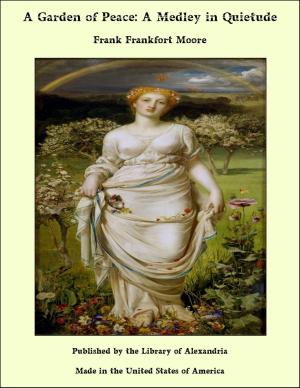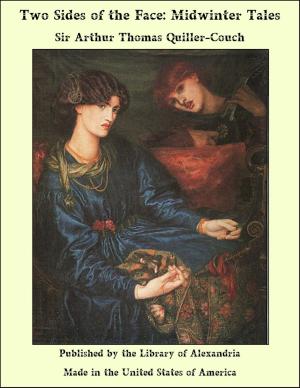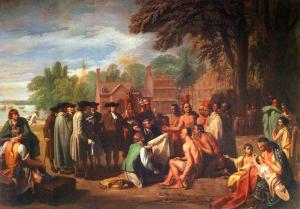The Voice from the Void: The Great Wireless Mystery
Nonfiction, Religion & Spirituality, New Age, History, Fiction & Literature| Author: | William Le Queux | ISBN: | 9781465595515 |
| Publisher: | Library of Alexandria | Publication: | March 8, 2015 |
| Imprint: | Language: | English |
| Author: | William Le Queux |
| ISBN: | 9781465595515 |
| Publisher: | Library of Alexandria |
| Publication: | March 8, 2015 |
| Imprint: | |
| Language: | English |
“Yes! I’m certain it was Gordon Gray—the man whose face I can never forget, and whom I could identify among a million! Gordon Gray! Returned from, the dead!” The white-haired rector, the Reverend Norton Homfray, a tall, sparely-built man of sixty-five, pursed his lips and drew a long breath. He was evidently greatly upset. He had taken off his surplice in the vestry after evening service, and now stood motionless against the old rood-screen gazing into the cavernous darkness of the empty Norman church. The congregation had dispersed into the winter darkness, wandering slowly and piously through the churchyard and out by the old lych-gate and down the hill, and old Morley, the verger, had already turned out the lights. “Yes,” murmured the old clergyman, “he sat in the last pew yonder listening to me as I preached! Surely he cannot have risen from the grave, for I heard that he died at the Waldorf-Astoria in New York eighteen months ago! Forget him? Ah!” he sighed. “How can I ever forget? Why is he here in Little Farncombe, I wonder?” For a few moments he remained motionless in the silent gloom of the historic old church, with its beautiful Norman arches so admired by archaeologists from all parts of the country. The stillness was broken only by the creaking of old Morley’s Sunday boots and the slow deep tick of the clock in the belfry. Then, at last, he buttoned his overcoat and made his way out into the windy December night, passing round the churchyard and entering the grounds of his quiet old-world, ivy-clad rectory, a sixteenth-century house too large for his needs and too expensive for his slender pocket. Norton Homfray was a fine type of country rector, a theological scholar and highly popular with all in his rural parish. As a young man at Balliol he had taken high honours, and when a curate at Durham he had married. After twenty-seven years of married happiness Mrs Homfray had died four years ago leaving one son, Roderick, a heavy-jawed young fellow, now twenty-six. Mr Homfray had been utterly crushed by his wife’s death, and his house was now conducted by Mrs Bentley, a deaf old woman with a high-pitched voice.
“Yes! I’m certain it was Gordon Gray—the man whose face I can never forget, and whom I could identify among a million! Gordon Gray! Returned from, the dead!” The white-haired rector, the Reverend Norton Homfray, a tall, sparely-built man of sixty-five, pursed his lips and drew a long breath. He was evidently greatly upset. He had taken off his surplice in the vestry after evening service, and now stood motionless against the old rood-screen gazing into the cavernous darkness of the empty Norman church. The congregation had dispersed into the winter darkness, wandering slowly and piously through the churchyard and out by the old lych-gate and down the hill, and old Morley, the verger, had already turned out the lights. “Yes,” murmured the old clergyman, “he sat in the last pew yonder listening to me as I preached! Surely he cannot have risen from the grave, for I heard that he died at the Waldorf-Astoria in New York eighteen months ago! Forget him? Ah!” he sighed. “How can I ever forget? Why is he here in Little Farncombe, I wonder?” For a few moments he remained motionless in the silent gloom of the historic old church, with its beautiful Norman arches so admired by archaeologists from all parts of the country. The stillness was broken only by the creaking of old Morley’s Sunday boots and the slow deep tick of the clock in the belfry. Then, at last, he buttoned his overcoat and made his way out into the windy December night, passing round the churchyard and entering the grounds of his quiet old-world, ivy-clad rectory, a sixteenth-century house too large for his needs and too expensive for his slender pocket. Norton Homfray was a fine type of country rector, a theological scholar and highly popular with all in his rural parish. As a young man at Balliol he had taken high honours, and when a curate at Durham he had married. After twenty-seven years of married happiness Mrs Homfray had died four years ago leaving one son, Roderick, a heavy-jawed young fellow, now twenty-six. Mr Homfray had been utterly crushed by his wife’s death, and his house was now conducted by Mrs Bentley, a deaf old woman with a high-pitched voice.
